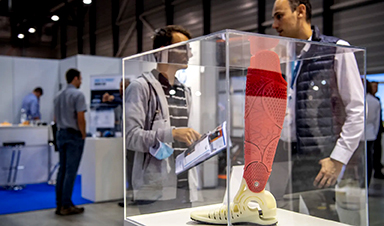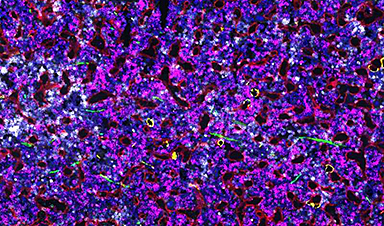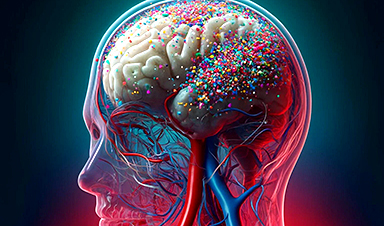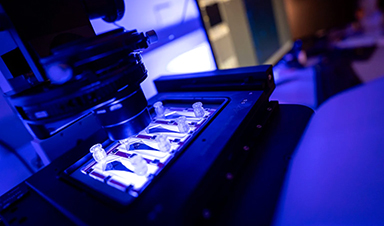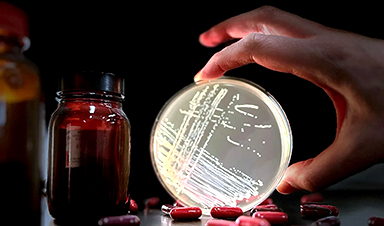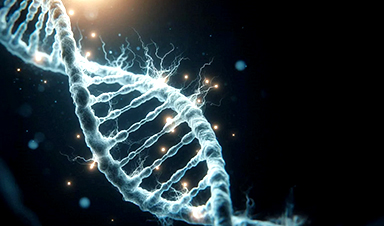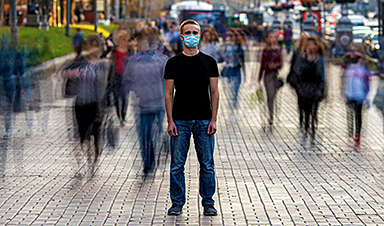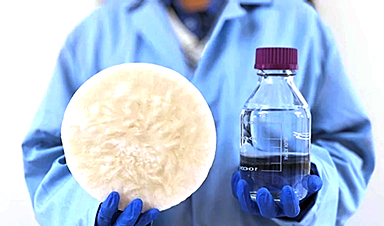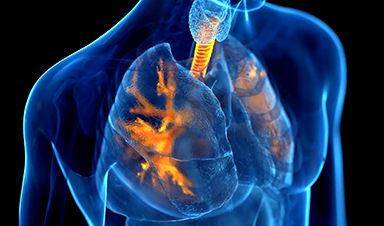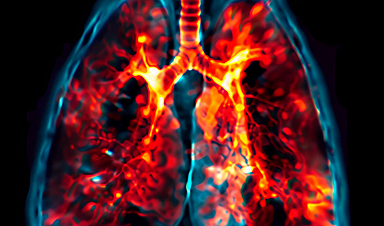| Scientists at RMIT University say their new research advances the potential of nanomedicine to cure conditions that are currently incurable, such as dementia and motor neurone disease. | |
| Their work explores how nanoparticles would interact with cells in humans and provides fundamental knowledge to help improve nanomedicine and develop the next generation of personalised biomedical technologies. | |
| Nanoparticles open the door to technologies that could improve treatments and disease diagnosis for patients, according to the scientists. | |
| One of the lead researchers, Dr Aaron Elbourne, said nanoparticle technologies could ultimately improve drug delivery, cancer treatments, disease diagnostics and antimicrobials. | |
| “Nanoparticles have been investigated as advanced nanomedicines, but they often miss the mark or fail to deliver their treatment to a specific location within the body,” said Elbourne, from the School of Science. | |
| “The main challenge is to control how nanoparticles engage with cells to accurately deliver the medicine. This has been poorly understood until now, but our latest work offers a clearer picture of what is happening at that nano level.” |
Helping to design better nanomedicines and diagnostic nanoparticles |
|
| Most nanoparticle technologies need to pass through a cell’s outer membrane to fulfill their function, Elbourne said. | |
| “This membrane serves as an important protective barrier that isolates the internal cell environment from the surroundings, but it also poses a challenge for the delivery of nanoparticles.” | |
| Elbourne said if scientists could overcome this challenge, it would potentially open a new era of medicine. | |
| The latest study, led by RMIT in collaboration with the University of Durham and published in the ACS Nano journal (“Behavior of Citrate-Capped Ultrasmall Gold Nanoparticles on a Supported Lipid Bilayer Interface at Atomic Resolution”), tackles this problem by providing scientists a pathway to design more effective nanomedicines and diagnostic nanoparticles. | |
How they conducted the research |
|
| Using atomic force microscopy along with computer simulations of molecular activity, the team discovered the precise mechanisms by which gold nanoparticles – a tiny fraction of the width of a human hair – interact with artificial cell membranes. | |
| Fellow RMIT lead researcher, Dr Andrew Christofferson, said their work was unique. | |
| “What makes this work unique is that we combine experiments and modelling to show a level of detail not seen before, and this will serve as a platform for future studies of nanoparticles and biological materials.” |
The potential to treat currently untreatable brain diseases |
|
| The team says one of the main barriers to finding a cure for diseases such as dementia and motor neurone disease is the current inability to deliver treatments that can cross the blood-brain barrier, a membrane that blocks foreign entities reaching the brain. | |
| First author and PhD researcher, Rashad Kariuki, was excited to work with nanoparticles that would be small enough to pass through this membrane. | |
| “We currently have limited treatments that can pass through the blood-brain barrier because many are just too big or don’t interact favourably with this particular membrane,” he said. | |
| “If we could use nanoparticles to treat brain diseases non-invasively, that would be a gamechanger.” | |
| More work needs to be done before nanoparticles reach their full potential to help treat diseases but new wound treatments using this technology are in development, Elbourne said. | |
| “We have collaborators at the University of South Australia that we’re working with on treatments for chronic and acute wounds,” Elbourne said. | |
| “Ultimately, our work could positively impact a wide range of treatments, meaning better outcomes for patients and health systems.” |
News
Scientists Invent Plastic That Can Dissolve In Seawater In Just A Few Hours
Plastic waste and pollution in the sea have been among the most serious environmental problems for decades, causing immense damage to marine life and ecosystems. However, a breakthrough discovery may offer a game-changing solution. [...]
Muscles from the 3D printer
Swiss researchers have developed a method for printing artificial muscles out of silicone. In the future, these could be used on both humans and robots. Swiss researchers have succeeded in printing artificial muscles out [...]
Beneficial genetic changes observed in regular blood donors
Researchers at the Francis Crick Institute have identified genetic changes in blood stem cells from frequent blood donors that support the production of new, non-cancerous cells. Understanding the differences in the mutations that accumulate [...]
Shocking Amounts of Microplastics in the Brain – It Could Be Increasing Our Risk of Dementia
The brain has higher concentrations of plastic particles compared to other organs, with increased levels found in dementia patients. In a comprehensive commentary published in Brain Medicine, researchers highlight alarming new evidence of microplastic accumulation [...]
Baffling Scientists for Centuries: New Study Unravels Mystery of Static Electricity
ISTA physicists demonstrate that contact electrification depends on the contact history of materials. For centuries, static electricity has intrigued and perplexed scientists. Now, researchers from the Waitukaitis group at the Institute of Science and [...]
Tumor “Stickiness” – Scientists Develop Potential New Way To Predict Cancer’s Spread
UC San Diego researchers have developed a device that predicts breast cancer aggressiveness by measuring tumor cell adhesion. Weakly adherent cells indicate a higher risk of metastasis, especially in early-stage DCIS. This innovation could [...]
Scientists Just Watched Atoms Move for the First Time Using AI
Scientists have developed a groundbreaking AI-driven technique that reveals the hidden movements of nanoparticles, essential in materials science, pharmaceuticals, and electronics. By integrating artificial intelligence with electron microscopy, researchers can now visualize atomic-level changes that were [...]
Scientists Sound Alarm: “Safe” Antibiotic Has Led to an Almost Untreatable Superbug
A recent study reveals that an antibiotic used for liver disease patients may increase their risk of contracting a dangerous superbug. An international team of researchers has discovered that rifaximin, a commonly prescribed antibiotic [...]
Scientists Discover Natural Compound That Stops Cancer Progression
A discovery led by OHSU was made possible by years of study conducted by University of Portland undergraduates. Scientists have discovered a natural compound that can halt a key process involved in the progression [...]
Scientists Just Discovered an RNA That Repairs DNA Damage – And It’s a Game-Changer
Our DNA is constantly under threat — from cell division errors to external factors like sunlight and smoking. Fortunately, cells have intricate repair mechanisms to counteract this damage. Scientists have uncovered a surprising role played by [...]
What Scientists Just Discovered About COVID-19’s Hidden Death Toll
COVID-19 didn’t just claim lives directly—it reshaped mortality patterns worldwide. A major international study found that life expectancy plummeted across most of the 24 analyzed countries, with additional deaths from cardiovascular disease, substance abuse, and mental [...]
Self-Propelled Nanoparticles Improve Immunotherapy for Non-Invasive Bladder Cancer
A study led by Pohang University of Science and Technology (POSTECH) and the Institute for Bioengineering of Catalonia (IBEC) in South Korea details the creation of urea-powered nanomotors that enhance immunotherapy for bladder cancer. The nanomotors [...]
Scientists Develop New System That Produces Drinking Water From Thin Air
UT Austin researchers have developed a biodegradable, biomass-based hydrogel that efficiently extracts drinkable water from the air, offering a scalable, sustainable solution for water access in off-grid communities, emergency relief, and agriculture. Discarded food [...]
AI Unveils Hidden Nanoparticles – A Breakthrough in Early Disease Detection
Deep Nanometry (DNM) is an innovative technique combining high-speed optical detection with AI-driven noise reduction, allowing researchers to find rare nanoparticles like extracellular vesicles (EVs). Since EVs play a role in disease detection, DNM [...]
Inhalable nanoparticles could help treat chronic lung disease
Nanoparticles designed to release antibiotics deep inside the lungs reduced inflammation and improved lung function in mice with symptoms of chronic obstructive pulmonary disease By Grace Wade Delivering medication to the lungs with inhalable nanoparticles [...]
New MRI Study Uncovers Hidden Lung Abnormalities in Children With Long COVID
Long COVID is more than just lingering symptoms—it may have a hidden biological basis that standard medical tests fail to detect. A groundbreaking study using advanced MRI technology has uncovered significant lung abnormalities in [...]


